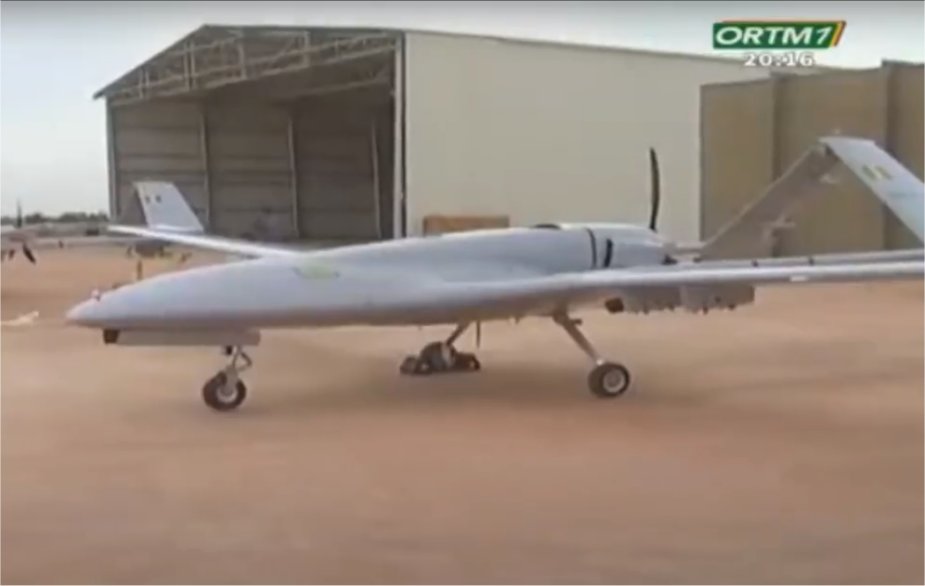According to a tweet published by Joseph Dempsey on December 22, 2022, Mali just became the latest confirmed operator of Turkish-built Bayraktar TB2 UCAVs.
Follow Air Recognition on Google News at this link
 First Bayraktar TB2 Unmanned Combat Aerial Vehicle in Mali. (Picture source: ORTM1)
First Bayraktar TB2 Unmanned Combat Aerial Vehicle in Mali. (Picture source: ORTM1)
The Bayraktar TB2 is a medium-altitude long-endurance (MALE) unmanned combat aerial vehicle (UCAV) capable of remotely controlled or autonomous flight operations.
The development of the Bayraktar TB2 had been spurred by a U.S. ban on exports of armed unmanned aircraft to Turkey due to concerns they would be used against PKK groups inside and outside Turkey.
Baykar started developing a new combat tactical aerial vehicle system at the request of the Presidency of Defense Industries, after the experiences of its first tactical UAV, the Bayraktar Çaldıran or Bayraktar TB1, delivered to the Turkish army in 2011. The Bayraktar TB2 made its maiden flight in August 2014.
The TB2 has a triple-redundant flight control system with autonomous taxi, takeoff, cruise, landing and parking capability. The computerized flight control system is the primary component, conducting sensor fusion algorithms with the real-time sensor data.
Mission-specific controls are handled through the mission control computer system. The aerial platform is guided through various redundant rotary and linear servo actuators. All of the main airborne avionics equipment, software, and hardware are under constant development.
The electronic power supply that powers the onboard systems is supported with triple alternators and balanced, smart lithium-ion battery units. A ruggedized heated camera unit is placed in the tail section of the platform to monitor flight and all payload and telemetry data are recorded to the airborne data recorder.
The redundancy architecture of the avionics supports autonomous emergency landings on different airfields if necessary. Sensor fusion algorithms, including an inertial navigation system, allow navigation and auto landing even with loss of global positioning signals.
















